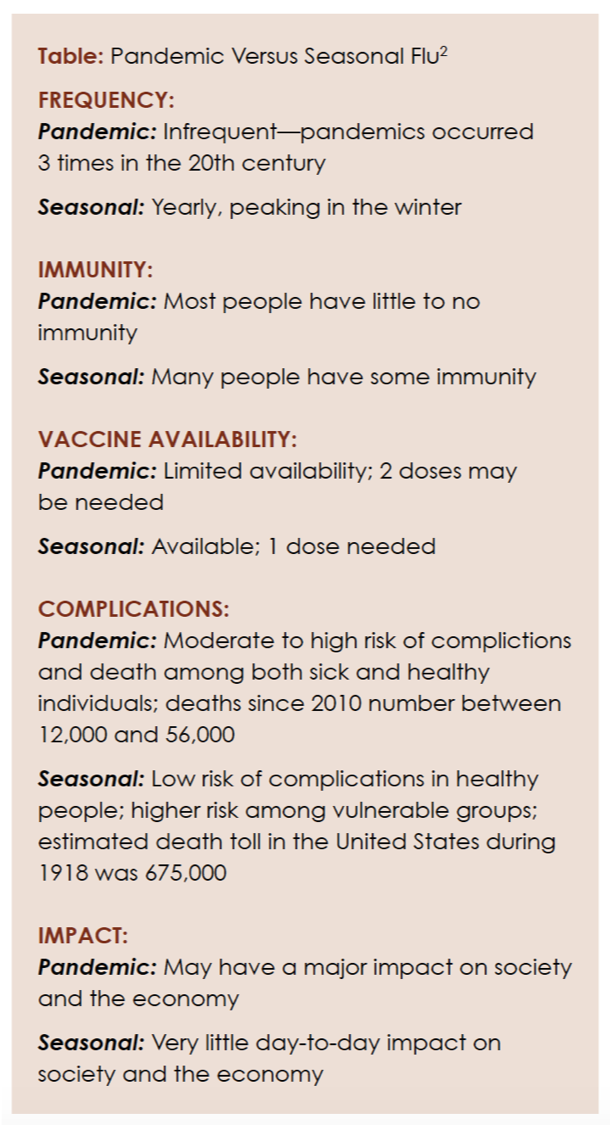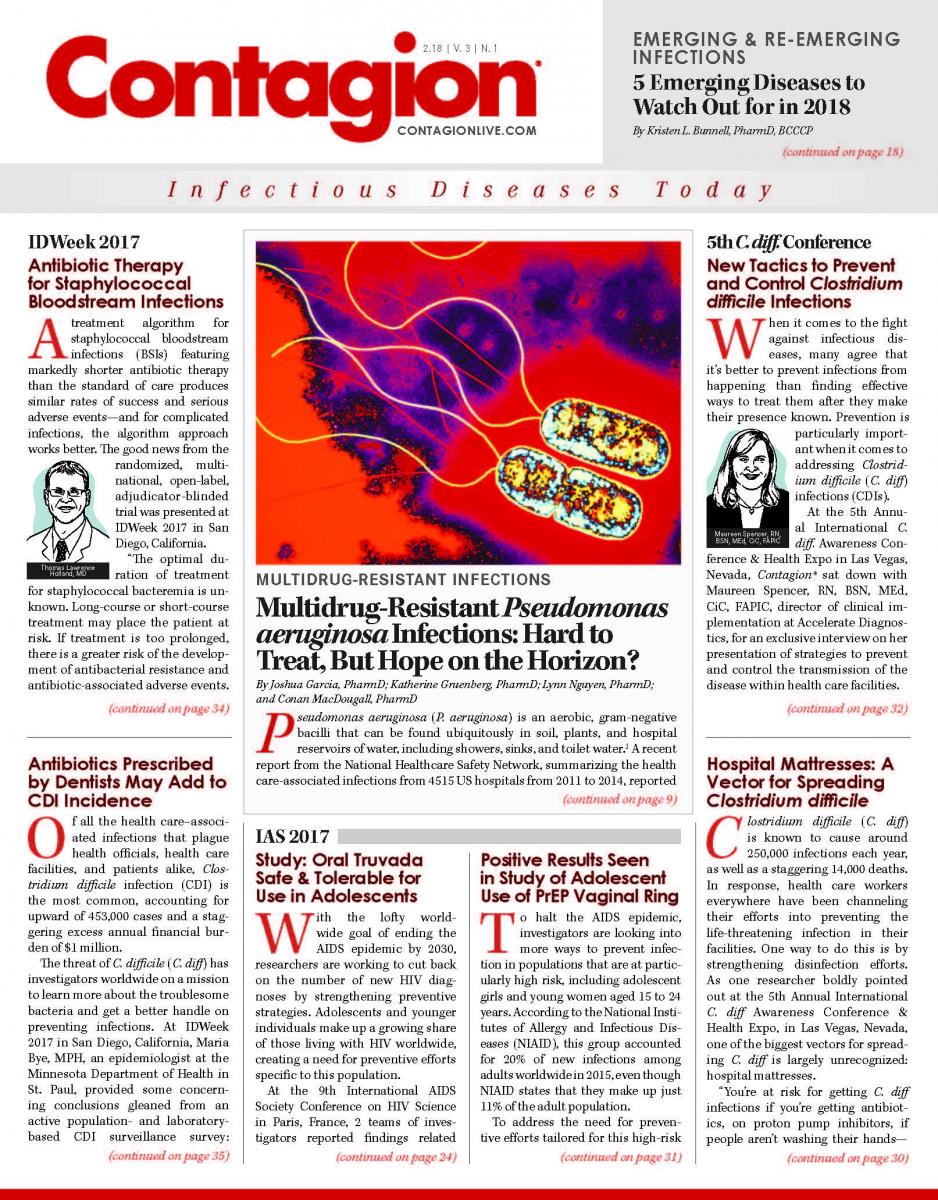The Spanish Flu Pandemic 100 Years Later: Are We Ready for Another One?
The lack of a universal flu vaccine and the ease with which borders are crossed means a fast-spreading virus could be devastating.
The influenza pandemic that gripped the world from 1918 to 1919 sickened 500 million individuals and killed almost 50 million, many of them young and otherwise healthy. A quarter of the US population took ill, and entire cities shut down to try to halt the disease’s spread. Deaths were swift and harsh as fluid filled victims’ lungs, and funeral homes and cemeteries were inundated with coffins that piled up faster than they could be buried.
One hundred years later, we have not experienced anything like the pandemic that shook the world in the early 20th century. But are we being complacent? Is another pandemic lurking in our future, and are we ready for such an event?
For at least 1 infectious disease researcher, the next deadly epidemic is an everyday worry. “It is going to occur,” Michael Osterholm, PhD, MPH, director of the Center for Infectious Disease Research and Policy at the University of Minnesota and an author of Deadliest Enemy: Our War Against Killer Germs (Little, Brown and Company, 2017), told Contagion®. “It’s just a matter of when and where it starts. The possibility that we could have a 1918-type pandemic again is actually very real.” The reason, he says, is that pandemics go back to ancient times; like hurricanes, they’ve occurred on a regular basis throughout history, with varying levels of severity. Recent outbreaks include H1N1 (swine flu), which killed about 8600 people worldwide in 2009, and H7N9 (avian flu), which has infected individuals throughout the current decade and, according to Dr. Osterholm, is being watched “very carefully” in China right now. As with swine and avian flu, he expects the next flu affecting a large number of humans will be zoonotic in origin.
Although the world has seen advancements in infectious-disease control since the Spanish Flu pandemic, including the creation of the seasonal flu vaccine, Dr. Osterholm says that certain facets of modern life make it more, not less, likely that another pandemic could be deadly. “We live in a global just-in-time economy,” he said. “A pandemic could put a screeching halt to that.” Because so many medical products used in the United States are made overseas, Dr. Osterholm explained, any interruption in the process of manufacturing and shipping goods would have an immediate impact on emergency departments’ ability to care for patients. Viruses also have the ability to spread in a way they didn’t 100 years ago, thanks to the millions who fly every day. “[Aviation] is a really a very accelerated way to move the virus that’s unprecedented in human history,” he said.
As far as readiness for a pandemic, Dr. Osterholm feels we’re unprepared. The biggest obstacle? The lack of a universal flu vaccine that covers all strains of influenza and protects people for several years. If scientists are able to develop one, he said, “we could...probably create the greatest public health victory in human history.” Governments, pharmaceutical companies, and philanthropic organizations all need to be working toward a universal flu vaccine, because although the current seasonal flu vaccine may help in the event of a pandemic, it also may be no match for whatever virus causes the next outbreak.
The delay in the development of a universal flu vaccine is rooted in money, according to Dr. Osterholm. Although diseases like HIV and cancer are funded to the tune of billions of dollars, significantly less is allocated to flu research. And while eradicating HIV and cancer are important goals, he feels an infectious-disease outbreak has the potential to be far more destructive than those conditions. Writing in the New York Times last year, he said an influenza epidemic “could be more devastating than an atom bomb.”1
CONCERN, BUT NOT PANIC
The prospect of another flu pandemic is worrisome, agreed Anthony Fauci, MD, head of the National Institute of Allergy and Infectious Diseases, who said we almost certainly will have another outbreak. “We have a history of pandemics,” he told Contagion®. “We’ve recently had a pandemic [H1N1]. The good news is, it wasn’t too severe.” Will the next pandemic be catastrophic? “Certainly, it’s possible,” he said. “[But] it would likely be mitigated by certain tools and interventions we have now that we didn’t have in 1918. We have antibiotics to treat the complications of bacterial pneumonia. We did not have any degree of capabilities of intensive care [in 1918].” He allowed that it’s possible that should a severe pandemic occur, the supply of tools we have now, such as respirators and medications, could be overwhelmed by the demand for them.
Dr. Fauci maintained that when pandemics occur, and how severely, are variables that are very difficult to predict (see Table). Given that almost all influenzas are zoonotic in nature, “you can at least keep an eye on what’s happening in the animal kingdom,” he said, citing birds and pigs specifically. “[In 2009, H1N1] was percolating in the swine population for a while. We weren’t monitoring the swine population particularly well, so we missed it.”

A universal flu vaccine would be a big help, Dr. Fauci agreed. “If we develop a universal flu vaccine that has at least some protection against any and all strains, then we will be much more ready than we are right now,” he said, cautioning that a society can never be truly ready for a catastrophic pandemic. A chart put out by the Centers for Disease Control and Prevention (CDC) that compares pandemic flu to seasonal flu highlights the particular risks of a pandemic, including the fact that most people will have almost no immunity to a virus to which they haven’t been exposed previously. Healthy individuals frequently suffer serious complications (as opposed to the seasonal flu, which disproportionately targets babies, older people, and those with preexisting conditions), and there is likely to be global economic disruption due to travel restrictions and business closings.2
TIPS TO STAY SAFE
Although it’s clear that nothing is guaranteed to stave off influenza in the event of a pandemic, there are steps individuals can take to protect themselves. Citizens can take advantage of antiviral drugs or pandemic vaccines, if those are available (they will likely be limited). Government officials, schools, and employers can encourage individuals to avoid traveling or gathering in public spaces to reduce the chance of infection. Well individuals should be separated from those who are ill and, as with the seasonal flu, should be vigilant about hand washing. Because a flu pandemic can last for months, all government and businesses entities ideally will have a plan in place to address every contingency, so surprises are minimized.3
Laurie Saloman, MS, is a health writer with more than 20 years of experience working for both consumer- and physician-focused publications. She is a graduate of Brandeis University and the Medill School of Journalism at Northwestern University. She lives in New Jersey with her family.
References:
- Osterholm M. The real threat to national security: deadly disease. The New York Times. March 24, 2017. nytimes.com/2017/03/24/opinion/the-real-threat-to-national-security-deadly-disease.html. Accessed on January 3, 2017.
- Centers for Disease Control and Prevention. How is pandemic flu different from seasonal flu? CDC website. cdc.gov/flu/pandemic-resources/basics/about.html. Updated December 9, 2016. Accessed on January 3, 2017.
- CDC. Get your workplace ready for pandemic flu. CDC website. cdc.gov/nonpharmaceutical-interventions/pdf/gr-pan-flu-work-set.pdf. Published April 2017. Accessed on January 3, 2017.

